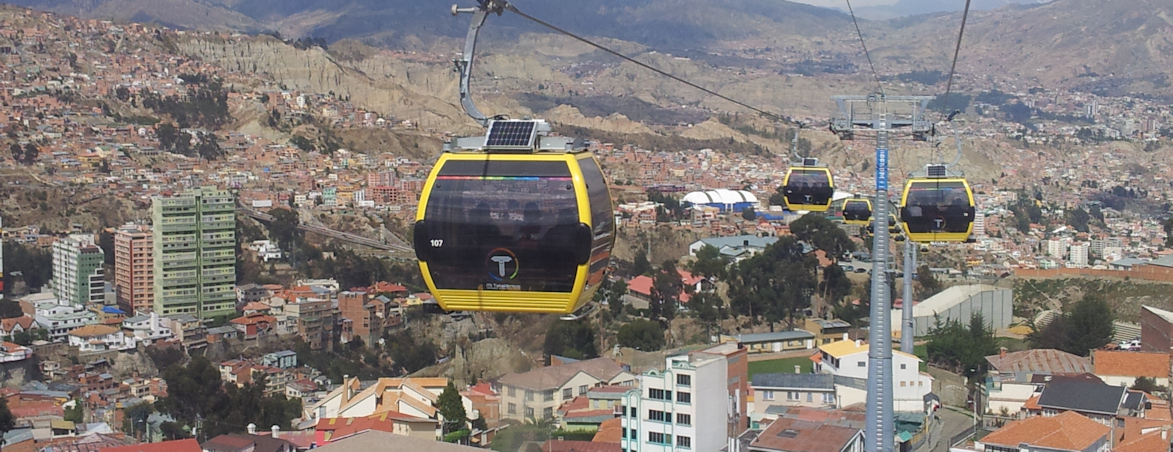Ineffective public transport system in rugged terrain
The Bolivian capital La Paz is the highest elevation capital in the world. Due to the rugged terrain and large elevation increase, bus transport was slow. In addition, the city was plagued by smog and its traffic jams. Not only was such a system ineffective, but it was also quite costly and not ecological.
A unique system of city cable railways
Therefore, the city came up with a unique idea how to handle its public transport. It has built its unique system of city cable railways. While the other cities’ cable railways only complement the standard public transport system, in La Paz, there the cable railways form the backbone of its public transport network. The system is to be eventually 33.8 kilometres long, featuring eleven lines and thirty stations. The cable railways were to be able to transport 300 thousand people a day. The project won the Latam Smart City award in the "Sustainable Urban Development and Mobility” category.
The city cable railway project eliminated numerous issues. It reduces air pollution, traffic jams, and reduces the demand for expensive fuels. It significantly shortens the driving times among the individual city districts, becoming more attractive to an increasing number of people. The individual transport decline reduced the parking issues, and finally, more effective mobility of residents also comes with significant economic benefits.
Fare collection system solution
The unique transport system was also to feature its unique check-in system, which differs in numerous ways, for example, from the metro check-in system, which is designed for fluctuating traffic. It was necessary to introduce a self-service sales method and prevent unauthorised passenger entry without valid travel documents. The contactless card, which people can buy and recharge at self-service terminals, serves as one’s travel document. It is also possible to check in using a 2D code on tickets or mobile device displays.
Passengers then place their card or 2D code onto the turnstiles featured by every station. Bar turnstiles were chosen, which will effectively prevent unauthorised entry and simultaneously regulate the flow of passengers to prevent the accumulation of passengers inside the transport space.
The system has been gradually launched since 2014. In 2017, the turnstiles were equipped with 2D code readers.

